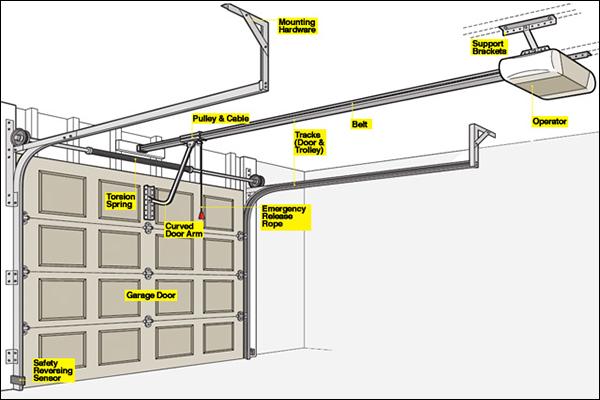Have you ever wondered about the inner workings of your garage door opener? Understanding how garage door openers work can help you appreciate the convenience and reliability they bring to your daily life. In this comprehensive guide, we’ll delve into the mechanics and technology behind garage door openers, shedding light on their fascinating operation.

The Basics of Garage Door Openers
At its core, a garage door opener is a motorized device designed to open and close your garage door with minimal effort. It consists of several key components, including:
- Motor: The heart of the garage door opener, the motor provides the power necessary to operate the door.
- Drive Mechanism: This mechanism transfers the motor’s power to the door, allowing it to move along its track smoothly.
- Remote Control: The remote control allows you to operate the garage door opener from a distance, typically using radio frequency signals.
How Garage Door Openers Work
1. Activation
Pressing the button on your garage door remote or wall-mounted control panel sends a signal to activate the garage door opener’s receiver.
Read too: Mastering the Art of How to Open a Garage Door Safely and Efficiently
2. Motor Operation
Upon receiving the signal, the garage door opener’s motor springs into action, generating the force needed to lift or lower the door.
3. Drive Mechanism Engagement
The motor transmits power to the drive mechanism, which varies depending on the type of opener, using a chain, belt, or screw drive. This mechanism moves the door along its track, either raising it to open or lowering it to close.
4. Limit Switches
Limit switches are installed at both ends of the door’s travel path to ensure that it stops in the correct position. When the door reaches the fully open or fully closed position, the limit switch triggers the motor to stop.
5. Safety Features
Modern garage door openers include safety features like photoelectric sensors and auto-reverse mechanisms, preventing accidents and protecting against entrapment.
Types of Garage Door Openers
There are several types of garage door openers available on the market, each with its own advantages and disadvantages:
- Chain Drive: These openers use a metal chain to lift and lower the door. They are durable and cost-effective but tend to be noisy during operation.
- Belt Drive: Belt drive openers use a rubber belt to move the door, resulting in quieter operation compared to chain drive models. They are ideal for homes with bedrooms above the garage.
- Screw Drive: Screw drive openers use a threaded steel rod to move the door. They are known for their reliability and require minimal maintenance.
Conclusion
Understanding garage door opener mechanics can help troubleshoot issues, maintain, and choose a new one. Familiarizing with their technology ensures reliable operation and daily convenience.



Leave a Reply